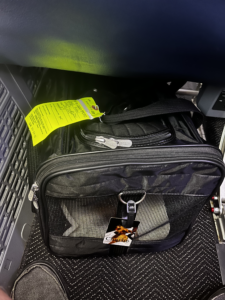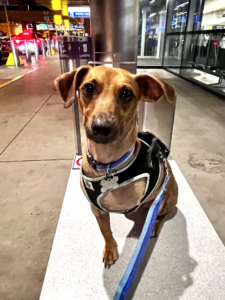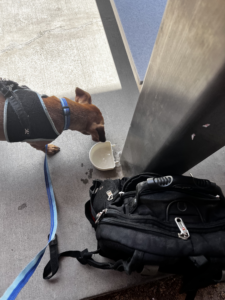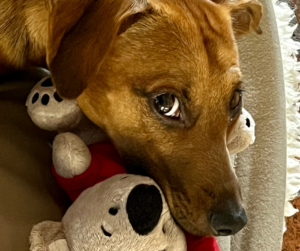Michael Baugh CDBC CPDT-KSA
I held the door at the emergency vet clinic for a man and a young girl. They were leaving. She had been crying. The girl was eight or nine. The man, probably her father, rested his hand lightly on the girl’s shoulder. “Thanks,” he mumbled softly. The girl clutched a collar to her chest, red with a bone-shaped tag. She looked up at me and said nothing. It was late afternoon, late June. They drifted past me, into the parking lot and the searing South Texas heat.
Their dog was unconscious when they brought him in. It was heat stroke, also called hyperthermia. The veterinary team tried. They did everything they could. The dog didn’t make it. A girl, a family, woke up that weekend morning with their beloved friend. They went to bed that night without him. Nature is cruel.
Hot cars are the primary cause of heat exhaustion and heat stroke in dogs. Don’t do it. Ever. When I was young, I left a dog in a car with the air conditioner on. I accidentally locked myself out. The car stalled. A locksmith showed up in minutes. My dog was fine. But, I learned my lesson.
Leaving a dog outside without shade, ventilation, or water is another common cause. There’s no excuse for that.
The one that sneaks up on us is the cruelest cause of all. We love our dogs. We want to play with them, walk them, run with them. Their bodies are different. They cool themselves differently, less efficiently. We think they are okay. They aren’t. We think they are cute and playful with their giant tongues hanging out. But, they are suffering. An emergency, by definition, is unexpected. Trouble comes on quickly. So can death, faster than we think.
Dogs collapse running along bicycles (don’t do this). They can collapse on walks, in backyards, in our arms.
I can’t forget that little girl’s face, the collar, the tag. I didn’t see her dog’s name. I was thirteen when my dog, Casper, got hit by a car.
“I know, honey,” I wanted to say to the girl. But she and her dad breezed by. It would have been inappropriate. But I do know. Sleep will be hard and the tears will come easily. She will remember for years, decades. She’ll keep the collar, maybe forever.
I tell Alexa to play her droning notification. “The National Weather Service has issued a heat advisory until….”
October, I think. “Delete notification,” I yell.
Houston is hot. It gets hot every summer. Hyperthermia is avoidable. We can protect our dogs. Tips from your dog trainer:
- Keep the dogs inside. Play inside.
- Limit outdoor activity to potty breaks.
- Shorten or skip walks. Early morning is cooler than evening.
- Provide cool (not cold) water.
There are telltale symptoms of heat exhaustion and heat stroke. If you are in doubt, err on the side of caution. Go to the vet right away.
I left the emergency clinic hours after the little girl and her father. My dog, Charlie, nuzzled under my chin; I kissed his forehead. He’d swallowed a bee. That was a bad idea to start. It turns out he’s also allergic to bees. Now we have another summer hazard to watch out for.
“You’re going to be okay, little buddy,” I said, choking back tears. I cranked up the AC and steered us toward home. “You’re okay.”
Michael Baugh teaches dog training in Houston Texas. He specializes in aggressive dog behavior.







